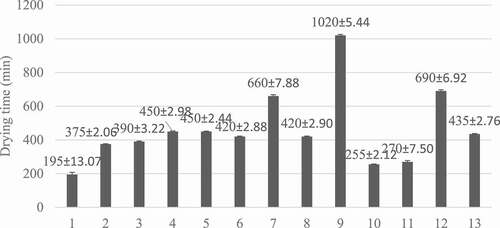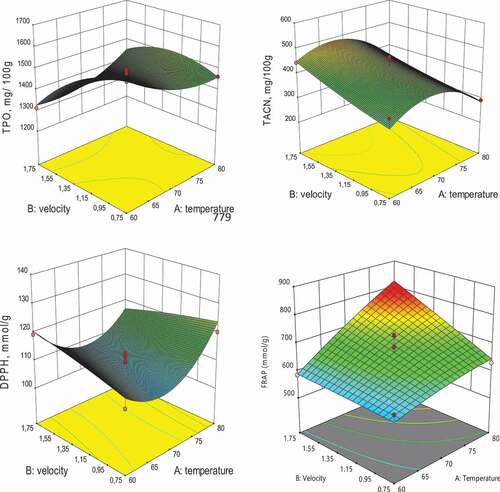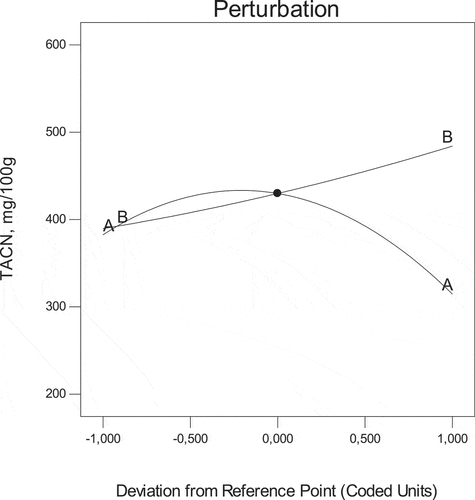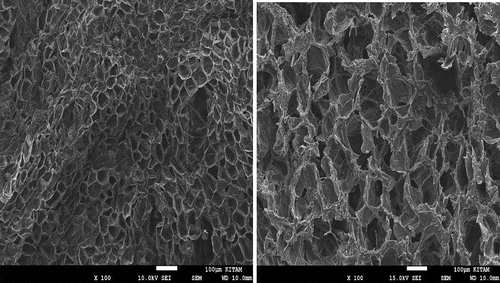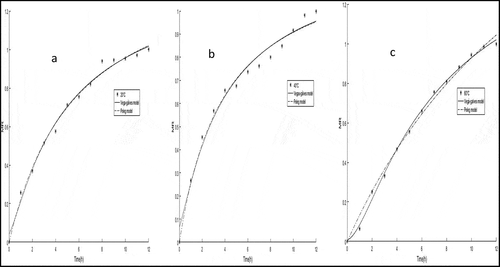Figures & data
Table 1. Actual and coded values of variables
Table 2. Coded central composite design with the responses
Table 3. Models used to describe the drying curves of R. pimpinellifolia.
Table 4. Models used to describe the rehydration kinetics of R. pimpinellifolia.
Table 5. Physical and chemical characteristics of fresh R. pimpinellifolia fruits
Table 6. Results of statistical analysis of the thirteen selected drying models applied to experimental drying data of R. pimpinellifolia fruits
Figure 5. Moisture content versus time for drying curve of R. pimpinellifolia fruits at 67. 21°C; 1.75 m.s−1

Table 7. Textural and shrinkage characteristics
Table 8. Results of statistical analysis of the modeling of rehydration data
Table 9. LC/MS/MS quantification of phenolic compounds identified in fresh and dried fruit (ppm)

